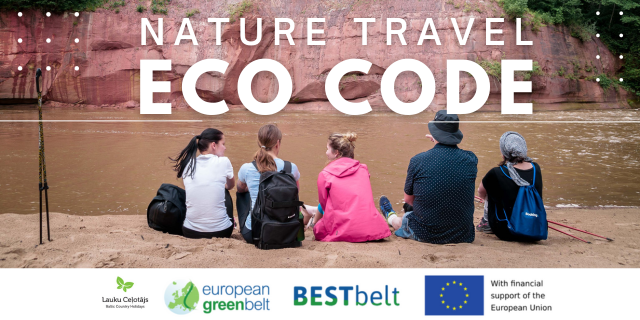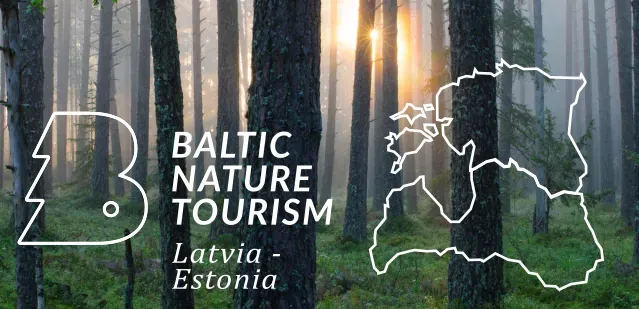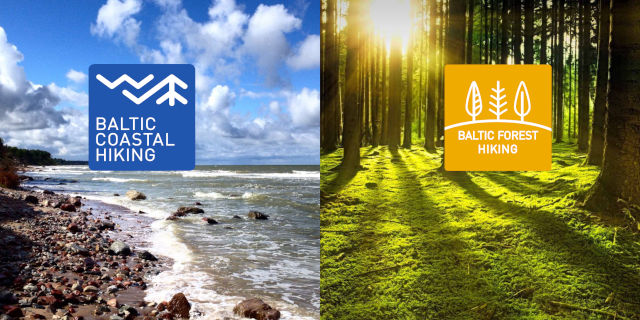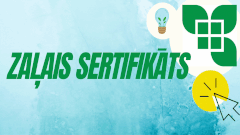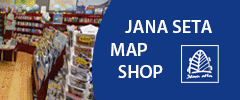Project POLPROP-NATURA (LIFE07 ENV/LV/000981) results
Layman's report, summary of the project progress and results (2011).
After-Life dissemination plan (2011). The plan includes measures and events where the project results and experience will be disseminated to enable its replication and transfer to protected nature areas in Latvia and other countries.
Natura2000 awareness (2011). The document describes the Natura2000 awareness raising measures in the project and their results.
The Baltic National Parks guide (2012). The guide offers practical advice and information to park visitors interested in wildlife watching, cultural and historical heritage sites, outdoor activities like hiking, cycling, boating, cross-country skiing.
Visitor Monitoring Guidelines in Protected Nature Areas. Example: Slītere National Park, Latvia (2012, 1322 Kb, pdf). The document represents a visitor monitoring methodology to detect the dynamics and aspects of environmental, social and economic impact from tourism in the Slītere National Park as a tourism destination. The document describes methods for detection and assessment of tourist numbers and behaviour, for long term monitoring methods of nature and cultural heritage attraction operations and for assessment of the results. Visitor monitoring will take place in the Slītere National Park following these guidelines. See the data summary here.
The manual "A starter guide to developing sustainable tourism in protected areas" (2011) focuses on protected areas that are in early stage of their tourism development and wish to do this in a well-planned and sustainable manner. The manual brings together state-of-the-art knowledge and experiences from different parts of Europe and can serve as a basic reference document.
Environmental policy and governance proposals for tourism development in protected nature sites (2011, 637 Kb, pdf). The proposals concern tourism and nature conservation policy documents and offer practical solutions for development problems in especially protected nature sites. The Slītere National park was selected as an example and a project demonstration site as the identified development problems were present in the park. Approvals of policy proposal draft documents here.
Sustainable tourism model (2011, ~1,5 Mb, pdf). The aim of the sustainable tourism model is to ensure continuous balance between economic development of the territory and nature conservation through involvement of the local community. This sustainable tourism model consists of several documents – guidelines – that have been drafted as documentation of experience in the process of building a sustainable tourism destination: tourism product development, event organization, marketing, visitor monitoring and other tasks. The guidelines describe how the sustainable tourism model can be implemented in practice.
After-Life dissemination plan (2011). The plan includes measures and events where the project results and experience will be disseminated to enable its replication and transfer to protected nature areas in Latvia and other countries.
Natura2000 awareness (2011). The document describes the Natura2000 awareness raising measures in the project and their results.
The Baltic National Parks guide (2012). The guide offers practical advice and information to park visitors interested in wildlife watching, cultural and historical heritage sites, outdoor activities like hiking, cycling, boating, cross-country skiing.
Visitor Monitoring Guidelines in Protected Nature Areas. Example: Slītere National Park, Latvia (2012, 1322 Kb, pdf). The document represents a visitor monitoring methodology to detect the dynamics and aspects of environmental, social and economic impact from tourism in the Slītere National Park as a tourism destination. The document describes methods for detection and assessment of tourist numbers and behaviour, for long term monitoring methods of nature and cultural heritage attraction operations and for assessment of the results. Visitor monitoring will take place in the Slītere National Park following these guidelines. See the data summary here.
The manual "A starter guide to developing sustainable tourism in protected areas" (2011) focuses on protected areas that are in early stage of their tourism development and wish to do this in a well-planned and sustainable manner. The manual brings together state-of-the-art knowledge and experiences from different parts of Europe and can serve as a basic reference document.
Environmental policy and governance proposals for tourism development in protected nature sites (2011, 637 Kb, pdf). The proposals concern tourism and nature conservation policy documents and offer practical solutions for development problems in especially protected nature sites. The Slītere National park was selected as an example and a project demonstration site as the identified development problems were present in the park. Approvals of policy proposal draft documents here.
Sustainable tourism model (2011, ~1,5 Mb, pdf). The aim of the sustainable tourism model is to ensure continuous balance between economic development of the territory and nature conservation through involvement of the local community. This sustainable tourism model consists of several documents – guidelines – that have been drafted as documentation of experience in the process of building a sustainable tourism destination: tourism product development, event organization, marketing, visitor monitoring and other tasks. The guidelines describe how the sustainable tourism model can be implemented in practice.
Traditional coastal architecture in the Slītere National Park. Description, analysis, recommendations (08.2011., in Latvian, 7.42 Mb, pdf). The document summarises historical information about the coastal architecture in Kurzeme region and gives recommendations to people involved in planning, design and building construction in coastal areas in the Slītere National Park.
Coastal Architecture guidelines (02.2011., ~3 Mb, pdf) The guideline highlights the features of the traditional architecture, especially the Liv villages in the Slītere National Park. The guideline describes the traditional building and construction elements like doors, windows, roofs, fences, etc., guiding those who want to use the auhthentic design elements in renovations and new constructions thus integrating teh buildings in the local landscape.
Botanical guide. The Plant Finder (02.2011.) The main goal of the authors of this guide is to help you to spot the types of plants and mushrooms that are all around us. The guide includes: the plant finder containing over 250 frequently observed plant species; the botanical tours and routes and separate objects or sites related to plants and botany, like dendrological gardens, botanical trails, gardens, etc.
Widlife tours (11.2010., 8,2 Mb, pdf) and Active tours- tour operator manual containing bird watching, mushrooming and botanical tours in Natura 2000 territories in Latvia.
"Guidelines for organisation of public events in nature teritories" (09.2010, in Latvian, 22 Mb, pdf.) are developed with the goal to summarise and transfer experience and knowledge of Lauku ceļotājs in planning and management of public events in nature territories, including Nature2000. The guidelines are based on the example of public discussion - the Travel Day to Slītere. Annexes to the guidelines here (in Latvian, 44 Mb, pdf).
The Slītere National Park Travel guide (05.2010.). First time, such a comprehensive guide has been published in Latvia on one of its national parks and a Natura2000 site. It is also the first one, produced involving local people and based on their stories. More than 30 local residents, people from the administration of the Slītere National Park and the Dundaga Municipality Council were involved in creation of this guide. See here the principles and basic steps ( 158 Kb, pdf) in production of this guide.
Guidelines and information template "The content of the outdoor information stand" (01.07.2010, 1,1 Mb, pdf). The aim of the guidelines is to provide an example of a visitor friendly, non-academic, attractive as well as useful and educational information stand on a territory or an object.
5 outdoor information stands were installed in the Slītere National Park in May 2010. They follow the nationally approved unified information design template for especially protected nature sites in Latvia. The stand information is based on the guidelines on information contents in outdoor stands. See the photos of the new stands in the gallery.
Latvian-Liv-English small dictionary (04.2010., 401 Kb, pdf) – The Livs are one of the smallest surviving nations in the world, and the Slītere National Park is known as one of the places where the Livs live today. The small dictionary is aimed to help in basic communication, in support of tourism and reference literature and to maintain the identity of the Liv nation. The dictionary contributes to sustainable tourism development. It offers translations of the most commonly used words – names of the local homesteads and places, foods, festivals, etc.
Guidelines for marking/signposting the trails. (03.2010., LV, 630 Kb, pdf)). Improved version after field-test of the marking process. The aim of this document is to initiate a unified marking system of tourist routes in Latvia for development of environment friendly and sustainable tourism. The guidelines offer cost effective solutions and represent an opportunity to reduce costs of recourses that so far have been invested in marking the tourist routes.
5 new tourist products in the Slītere National Park. (12.2009.) 5 new products are designed in the Slītere National Park: hiking, cycling, boating, driving and nature watching. The products have been systematised in 9 routes and tours. The goal of the new products is to attract longer visitor stays in the national park and its vicinity, making use of local services and contributing to the long term development of the area. The descriptions of the routes were coordinated, supplemented and updated with participation of the local entrepreneurs, local tourism specialists and residents as well as administration of the Slītere National Park. Read here (242 Kb, pdf) about the development process, principles and basic steps in product preparation.
A new exhibition stand has been produced (01.2010.), highlighting sustainable tourism in Natura2000 sites. It was launched at the "Balttour 2010" tourism trade fair where Lauku ceļotājs presented the new offer of active and nature tourism – cycling, self-drive, hiking and boating routes in Slītere National Park and Ķemeri National Park. Photos from the trade fair here. During three days, the 17th international travel trade fair "Balttour 2010" attracted 17 042 visitors.
Proposals for sustainable tourism development in the Slītere national park (12.2009., 1,02 Mb, pdf) – the document looks at the territory of the SNP as a single destination managed according to the principles of sustainable development. The proposals are developed for actions starting with 2010. In cooperation with local residents, tourist service providers, representatives of the administration of the SNP, local municipality, tourist information office and local NGOs. The present Nature Protection Plan of the SNP has a reference to the Proposal document.
| Back: www.polprop.celotajs.lv | |||
    |
With the contribution of the LIFE financial instrument of the European Community. Co-financed Ministry of the Environment and Latvian Environmental Protection Fund Administration. | ||
